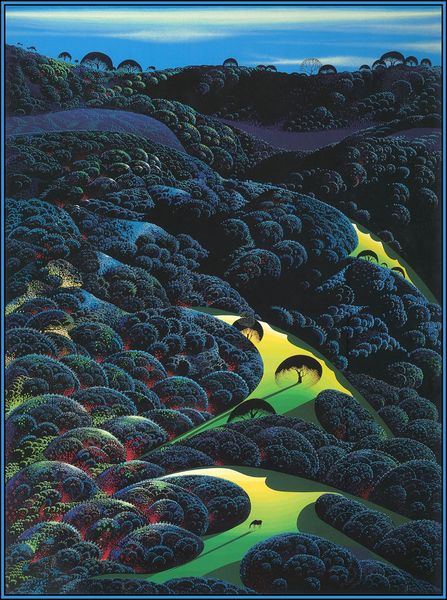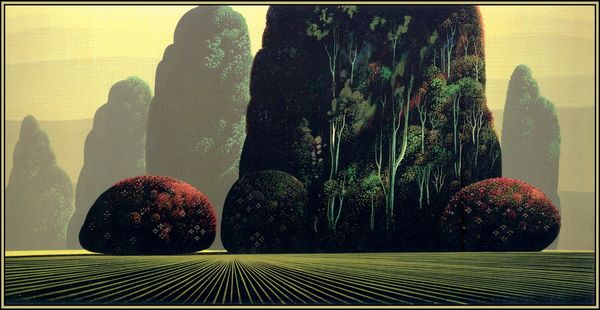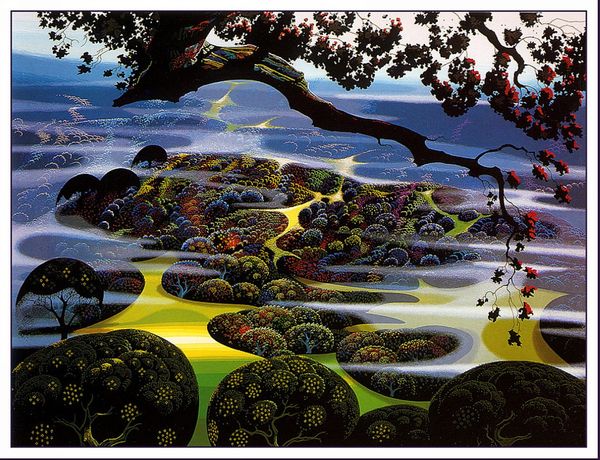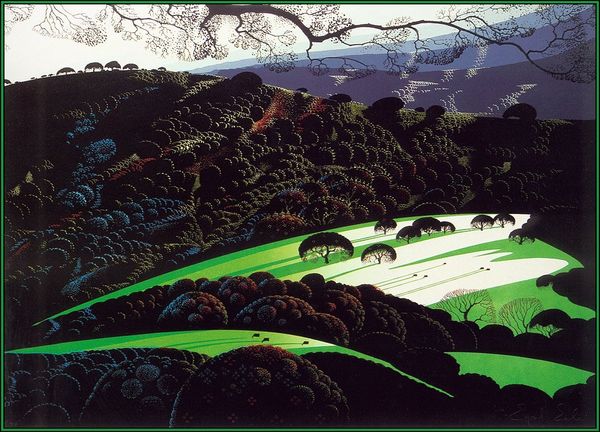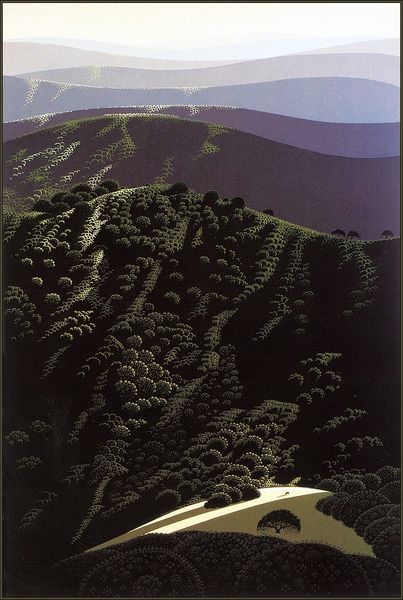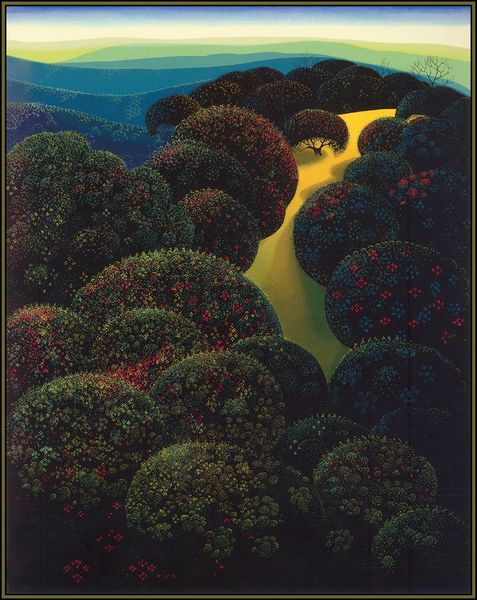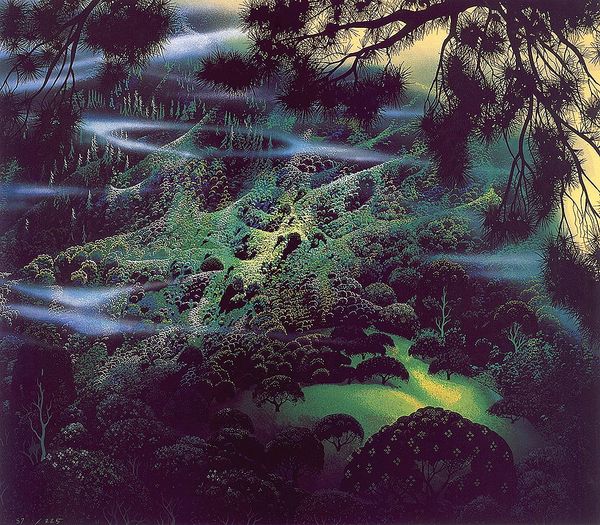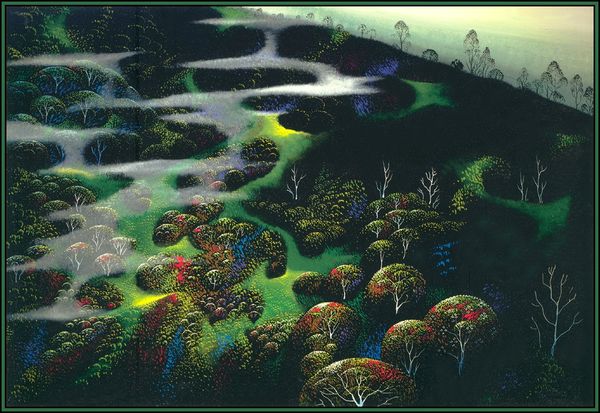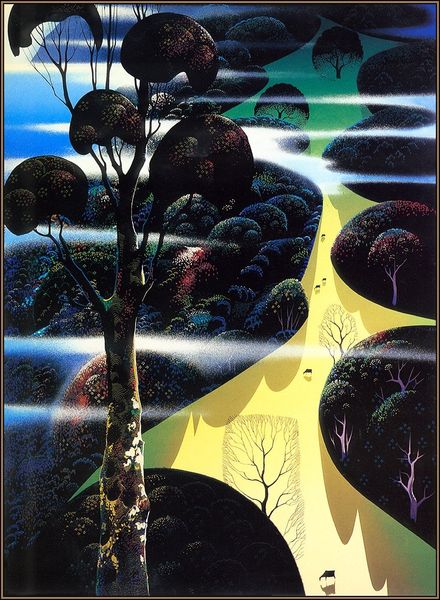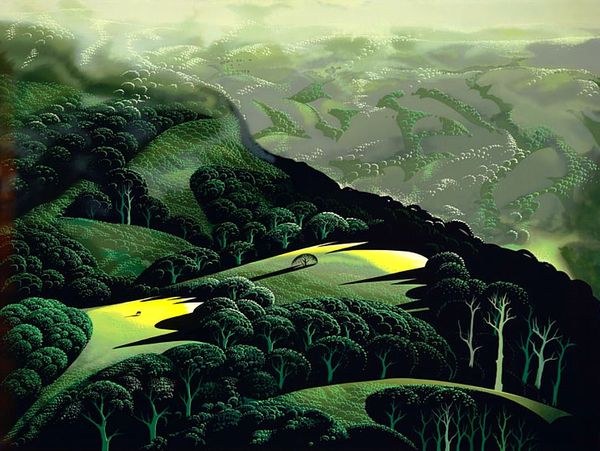
Copyright: Eyvind Earle,Fair Use
Editor: We're looking at Eyvind Earle's "Blue Coastline" from 1994, an oil painting that seems to evoke both a sense of realistic landscape and dreamlike fantasy. It's quite striking, with dramatic light contrasting against deeply shadowed hills. What's your perspective on this work? Curator: Earle's work, particularly this piece, occupies an interesting space in the public's understanding of landscape art. The sharp lines and vibrant colors draw from commercial art traditions—Earle did extensive work for Disney, after all. Consider the implications of an artist moving so fluidly between fine art and commercial realms; how does that affect our understanding of its value or authenticity? Editor: That’s a fascinating point. The Disney connection gives it a certain popular appeal, but I wonder if that might also lead some to dismiss it as 'just' illustration rather than serious painting? Curator: Precisely. And that gets into questions about the institutions that validate art – the gallery system, the museum world, critical discourse. Would this work be perceived differently without that Disney connection? Is there a kind of artistic classism at play? What narratives were pushed by gatekeepers around this kind of work? Editor: I see what you mean. It makes me think about who gets to decide what’s ‘high art’ and who is included in that canon. The composition, even with the simplification, still pulls me in though. Is there something to the romantic landscape tradition being subverted here? Curator: That's an excellent question to ask. The romanticism is still there but presented through a populist appeal in production values and familiar visual codes. Think about the broader shifts happening in the art world and in society as a whole at the time Earle was producing this painting, toward broader consumption of imagery and ideas. Do you think a painting such as "Blue Coastline" is inherently democratizing? Editor: I’m not sure; maybe democratizing in its accessibility, but perhaps less so in its representation, in that it might reinforce idealized visions of nature. Thanks, that's given me a lot to consider. Curator: Indeed, and the art market is still the arena that influences and shapes the perceived accessibility and aesthetic. I'll also be pondering on that point.
Comments
No comments
Be the first to comment and join the conversation on the ultimate creative platform.
